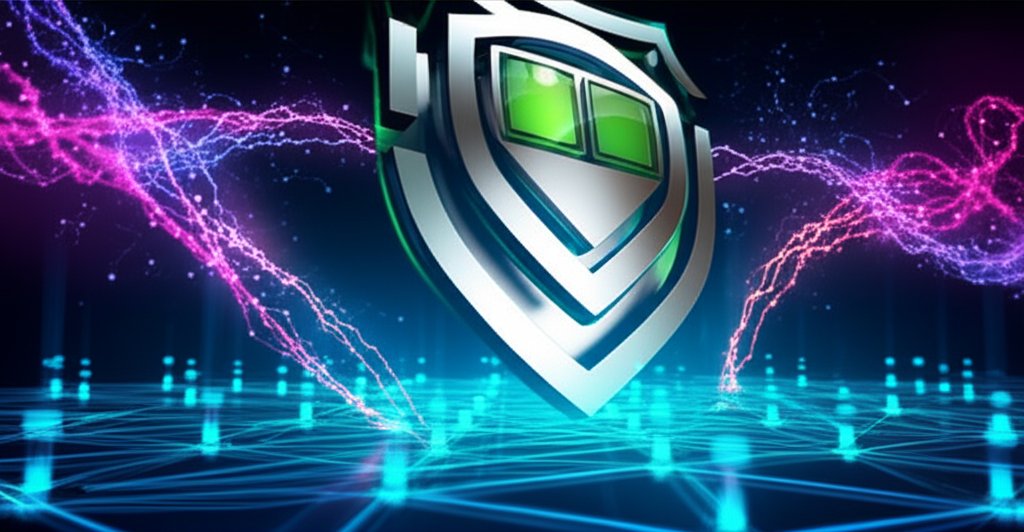The digital landscape is in constant flux, and with it, the threats to our cybersecurity. While we contend with today’s sophisticated phishing attacks and devastating ransomware, a monumental technological shift is on the horizon: quantum computing. This isn’t just a distant scientific marvel; it poses a direct, fundamental challenge to the very encryption that safeguards our digital lives today.
For small businesses, this raises a critical question: how do we secure our operations not just for today’s threats, but for tomorrow’s quantum reality? The answer lies in proactive defense, and specifically, in embracing Zero Trust security. This article will demystify the quantum threat and, more importantly, empower you with concrete, actionable strategies to fortify your network, ensuring its resilience against future challenges.
Zero Trust Meets Quantum: Securing Your Small Business Against Tomorrow’s Threats
The time to prepare for “Q-Day” is now. Understand how Zero Trust security can provide a robust defense for your small business against emerging quantum threats. This guide offers clear, actionable steps to implement Zero Trust principles, safeguarding your business’s vital data for the long term.
The Cybersecurity Landscape: Why We Need a New Approach
Small businesses today face a relentless barrage of cyber threats. From sophisticated phishing attacks that trick employees into handing over credentials to devastating ransomware that locks up your entire operation, the dangers are real and ever-present. These aren’t just big corporation problems; they’re directly impacting us, draining resources, and eroding customer trust. It’s a challenging environment, to say the least.
For too long, we’ve relied on what’s often called “castle-and-moat” security. You know the drill: strong perimeter defenses (the castle walls) to keep outsiders out, but once an attacker bypasses that initial barrier, they’re largely free to roam inside. This approach simply doesn’t cut it anymore in a world where employees work from home, use personal devices, and access cloud applications. The “inside” isn’t safe by default, and that’s a crucial shift we need to acknowledge.
Understanding Zero Trust: Trust No One, Verify Everything
So, if the old ways are failing us, what’s the alternative? Enter Zero Trust security. It’s a revolutionary but incredibly logical concept that’s gaining traction because it simply makes sense in today’s threat landscape. At its core, Zero Trust operates on a single, powerful principle: “never trust, always verify.”
What is Zero Trust Security? (Simplified)
Imagine you run a small office. In a traditional setup, once someone passes the reception desk (the perimeter), you might assume they’re trustworthy and let them access various rooms without further checks. With Zero Trust, it’s like every single door, every file cabinet, and even every interaction requires fresh identification and permission. You don’t automatically grant access to anyone or anything, regardless of whether they’re inside or outside your network.
Key Principles in Plain English:
- Continuous Verification: Every user, every device, every application connection is constantly checked and authenticated. It’s not a one-and-done process. If you sign in this morning, we’re still checking if you should have access to this specific file five minutes from now.
- Least Privilege: Users only get access to the absolute minimum resources they need to do their job, and nothing more. Think of it like a hotel key card that only opens your room, not every room in the building.
- Microsegmentation: This means breaking your network into tiny, isolated sections. If a breach occurs in one segment, it’s contained, preventing the attacker from easily moving to other, more sensitive parts of your network. It’s like having firewalls inside your network.
- Assume Breach: Always operate as if an attacker might already be inside your network. This mindset encourages proactive defense and rapid response, rather than solely focusing on prevention.
How Zero Trust Helps Small Businesses:
Implementing Zero Trust can dramatically improve your protection against common threats. It makes it much harder for phishing attacks to escalate because even if credentials are stolen, the attacker won’t get far without continuous verification. Ransomware can be contained to smaller segments, limiting its blast radius. And insider threats, whether malicious or accidental, are mitigated by least privilege access and constant monitoring. This comprehensive approach helps small businesses bolster their operations and data more effectively.
The Quantum Threat: A Future Challenge for Today’s Encryption
Now, let’s shift our gaze slightly further into the future, towards something that sounds like science fiction but is rapidly becoming reality: quantum computing. This isn’t about immediate panic, but rather about proactive awareness.
Quantum Computing in a Nutshell:
Imagine a computer that doesn’t just process information as 0s and 1s, but can process 0s, 1s, and combinations of both simultaneously. That’s a highly simplified way to think about quantum computers. These aren’t just faster traditional computers; they use the bizarre rules of quantum mechanics to solve certain types of problems that are practically impossible for even the most powerful supercomputers today. They are powerful new machines, and their potential is enormous.
How Quantum Computers Threaten Encryption:
The incredible power of quantum computers poses a direct threat to the very foundations of our current digital security, especially our encryption.
- The Problem with Current Encryption: Most of the secure connections we rely on every day—for online banking, secure websites (HTTPS), encrypted emails, and VPNs—are protected by what’s called public-key encryption. Algorithms like RSA and ECC are the workhorses here. They rely on mathematical problems that are incredibly hard for traditional computers to solve. But for a quantum computer, using algorithms like Shor’s algorithm, these problems become trivial. They could break these widely used encryption schemes with frightening ease.
- “Harvest Now, Decrypt Later”: This is a particularly insidious threat. Imagine attackers today collecting vast amounts of encrypted data—your financial records, your trade secrets, your personal communications. Even though they can’t decrypt it now, they can store it. When quantum computers become powerful enough in the future, they can then go back and decrypt all that “harvested” data. This means data you consider safe today might not be safe tomorrow.
- When is “Q-Day”? The good news is, we’re not there yet. Quantum computers capable of breaking current encryption aren’t readily available today. However, experts estimate that “Q-Day” – the point at which our current encryption becomes vulnerable – could arrive anywhere from the mid-2030s to the 2040s, or even sooner with unexpected breakthroughs. Planning is crucial now, because the data harvested today will be vulnerable then.
- What About Other Encryption (AES)? It’s important to note that not all encryption is equally vulnerable. Symmetric encryption, like AES (Advanced Encryption Standard), which is used for encrypting data at rest or within secure tunnels, is considered more resistant to quantum attacks. While a quantum computer might reduce its effective strength, it would likely require significantly larger key sizes to remain secure, rather than being completely broken. Still, it requires consideration and a forward-thinking approach.
Marrying Zero Trust and Quantum-Safe Practices: Your Network’s Adaptive Armor
This is where our two concepts come together beautifully. You might be thinking, “How does Zero Trust, which is about access control, help with quantum encryption, which is about breaking codes?” The answer lies in resilience and damage limitation. The “Is Zero Trust Security Ready for the Quantum Era?” question actually has a positive answer here.
The Synergies:
Zero Trust’s “never trust, always verify” approach naturally complements quantum-safe strategies. Even if, hypothetically, a quantum computer breaks through an encryption layer somewhere in your network, Zero Trust principles can significantly limit the damage. If an attacker gains access to one encrypted piece of data, they still face continuous authentication checks, least privilege restrictions, and microsegmented barriers within your network. They can’t just “walk in” and take everything. It limits their lateral movement, making it harder to exploit any compromised encryption.
Why This Combo is Crucial for Small Businesses:
For small businesses, this combination is incredibly powerful. You don’t need to become a quantum physicist overnight. What you need is a robust, adaptable security framework. Zero Trust provides that framework today, building a resilient foundation that will make your network more resistant to any threat, including those that leverage quantum capabilities in the future. It’s not about complex quantum solutions today, but about building a flexible framework that can easily integrate future quantum-safe technologies when they become mainstream. Understanding the nuances of emerging quantum threats is vital for this combined approach.
Practical Steps for Small Businesses to Fortify Their Network
So, what can you actually do right now? The good news is that many of the most effective steps are foundational cybersecurity best practices that align perfectly with Zero Trust principles. They’re not overly technical and can be implemented in stages.
Step 1: Understand Your “Crown Jewels” (Data Inventory & Risk Assessment):
- Identify what sensitive data you have and where it lives: This is fundamental. Do you store customer credit card numbers, employee PII (Personally Identifiable Information), or proprietary business plans? Where is it located—on local servers, cloud drives, individual laptops? You can’t protect what you don’t know you have.
- Assess your current security strengths and weaknesses: Take a realistic look. What security measures do you already have in place? Where are the gaps? This doesn’t require a fancy auditor; a thoughtful internal review is a great start.
Step 2: Start with Strong Zero Trust Foundations:
- Implement Multi-Factor Authentication (MFA) Everywhere: This is arguably the single most effective and easiest step you can take. Requiring a second form of verification (like a code from your phone) makes it exponentially harder for attackers to use stolen passwords. It’s incredibly effective and often free or low-cost through many service providers.
- Enforce Least Privilege: Review all user accounts and system access. Does your marketing person really need access to accounting software? Do temporary contractors need permanent access to everything? Limit it strictly. You don’t want someone to have more privileges than necessary.
- Segment Your Network: Even simple segmentation helps. Separate your guest Wi-Fi from your business network. Put your IoT devices (smart cameras, printers) on their own network. This reduces the attack surface significantly.
- Continuous Monitoring: Use available tools (even basic ones from your router or cloud services) to watch for unusual activity. Unexpected logins at odd hours, large data transfers, or access attempts from unknown locations are red flags.
Step 3: Prepare for Post-Quantum Cryptography (PQC):
- What is PQC? It stands for Post-Quantum Cryptography. These are new encryption algorithms being developed specifically to resist attacks from quantum computers. The National Institute of Standards and Technology (NIST) is leading the charge in standardizing these.
- Crypto-Agility: This is the ability to easily swap out old encryption algorithms for new PQC algorithms when they become standardized and available. Think of it like designing your systems for effortless software updates. If your systems are “crypto-agile,” migrating to PQC will be far less disruptive. Ask your software vendors about their plans for PQC readiness.
- Stay Informed: Keep an eye on NIST recommendations and software updates from your vendors. You don’t need to be an expert, but being aware of the general timeline and major announcements will help you prepare.
Step 4: Educate Your Team:
- Regular cybersecurity training is vital: Your employees are your first line of defense. Phishing awareness, safe browsing habits, and understanding data handling policies are non-negotiable.
- Teach about phishing, strong passwords, and data handling: Make it practical and relatable.
Step 5: Backup and Recovery:
- Regular, secure backups are essential for any threat: If the worst happens, whether it’s a quantum attack, ransomware, or a natural disaster, secure, offsite backups are your lifeline.
Budget-Friendly Tips for Small Businesses:
- Focus on fundamental Zero Trust principles first: Many steps like MFA, least privilege, and employee training are low-cost or even free.
- Leverage cloud service providers with built-in security: Cloud providers often offer robust security features (including MFA, access controls, and encryption) that would be expensive to build in-house. Make sure you configure them correctly!
- Consider managed IT services for expert guidance: If security feels overwhelming, outsourcing to a reputable managed IT service provider can give you access to expertise without the cost of a full-time security team.
Dispelling Myths and Addressing Concerns
Let’s address some common thoughts you might have:
- “Is it an immediate threat?” No, it’s not. You won’t wake up tomorrow to quantum computers breaking all your passwords. However, the “harvest now, decrypt later” threat means that data you’re encrypting today could be vulnerable in the future. So, proactive planning is critical.
- “Is it too complicated for my small business?” Absolutely not. While the underlying technology of quantum computing is complex, the actionable steps we’ve outlined for securing your network with Zero Trust are entirely manageable. Break it down into manageable steps, focusing on the basics first.
- “Will it be too expensive?” Not necessarily. Many foundational Zero Trust steps (like MFA) are low-cost or free. Investing in robust security is a long-term investment that protects your business from potentially catastrophic financial and reputational damage. Start with what you can afford and build from there.
Conclusion: Build a Resilient Future, One Secure Step at a Time
The quantum era is coming, and it will undoubtedly reshape our digital landscape. But here’s the empowering truth: by embracing the principles of Zero Trust security today, your small business can build a network that is not only resilient against current threats but also inherently adaptable for the quantum challenge. It’s about laying a strong, flexible foundation.
Don’t let the complexity of “quantum” overwhelm you. Focus on the concrete, actionable steps we’ve discussed. Start with strong Zero Trust foundations, stay informed about PQC developments, and educate your team. By taking these strategic, incremental improvements now, you empower your business to navigate the future with confidence, one secure step at a time.
Take control of your digital security today. Your digitally resilient network starts with your next smart decision.


